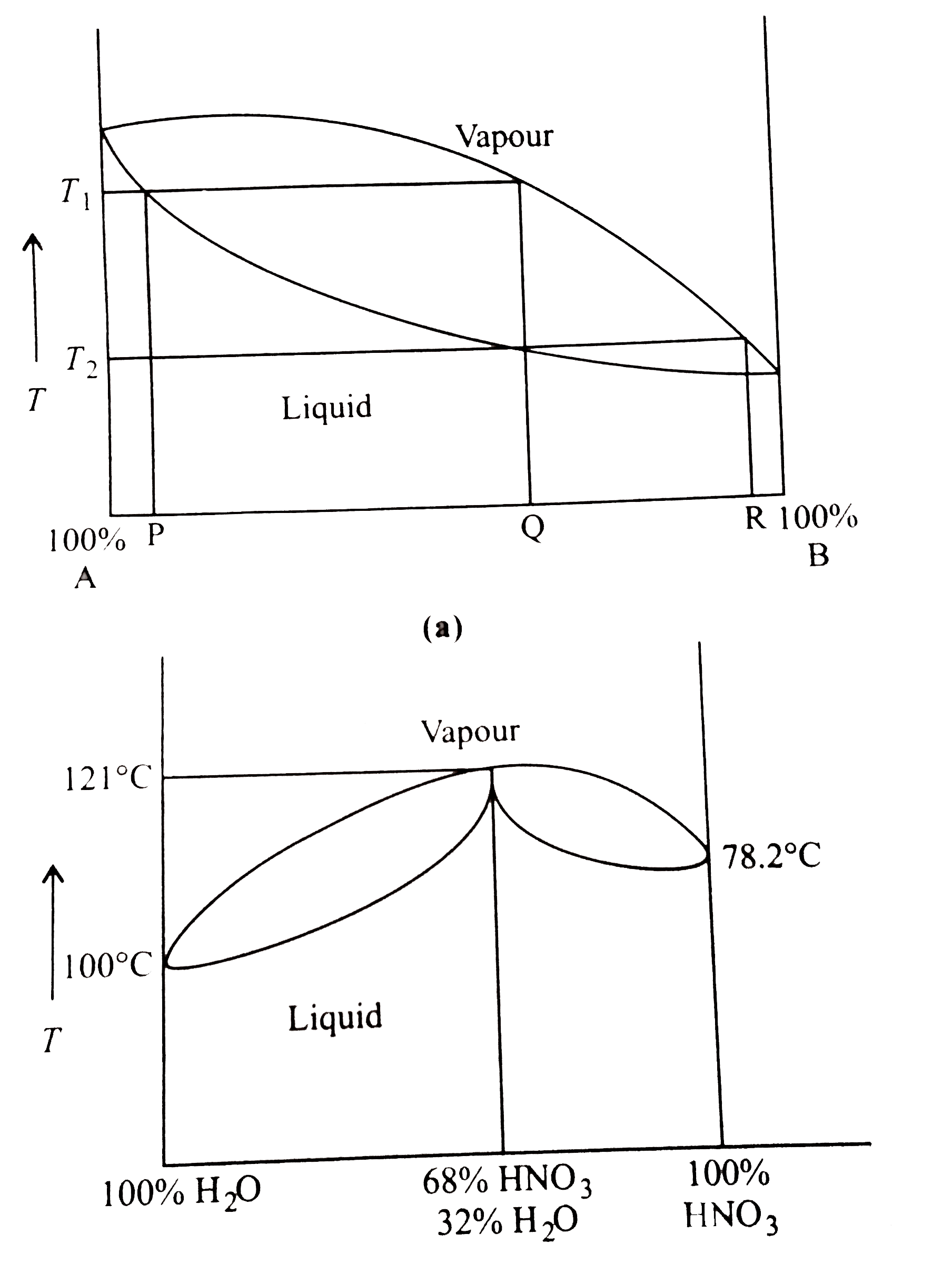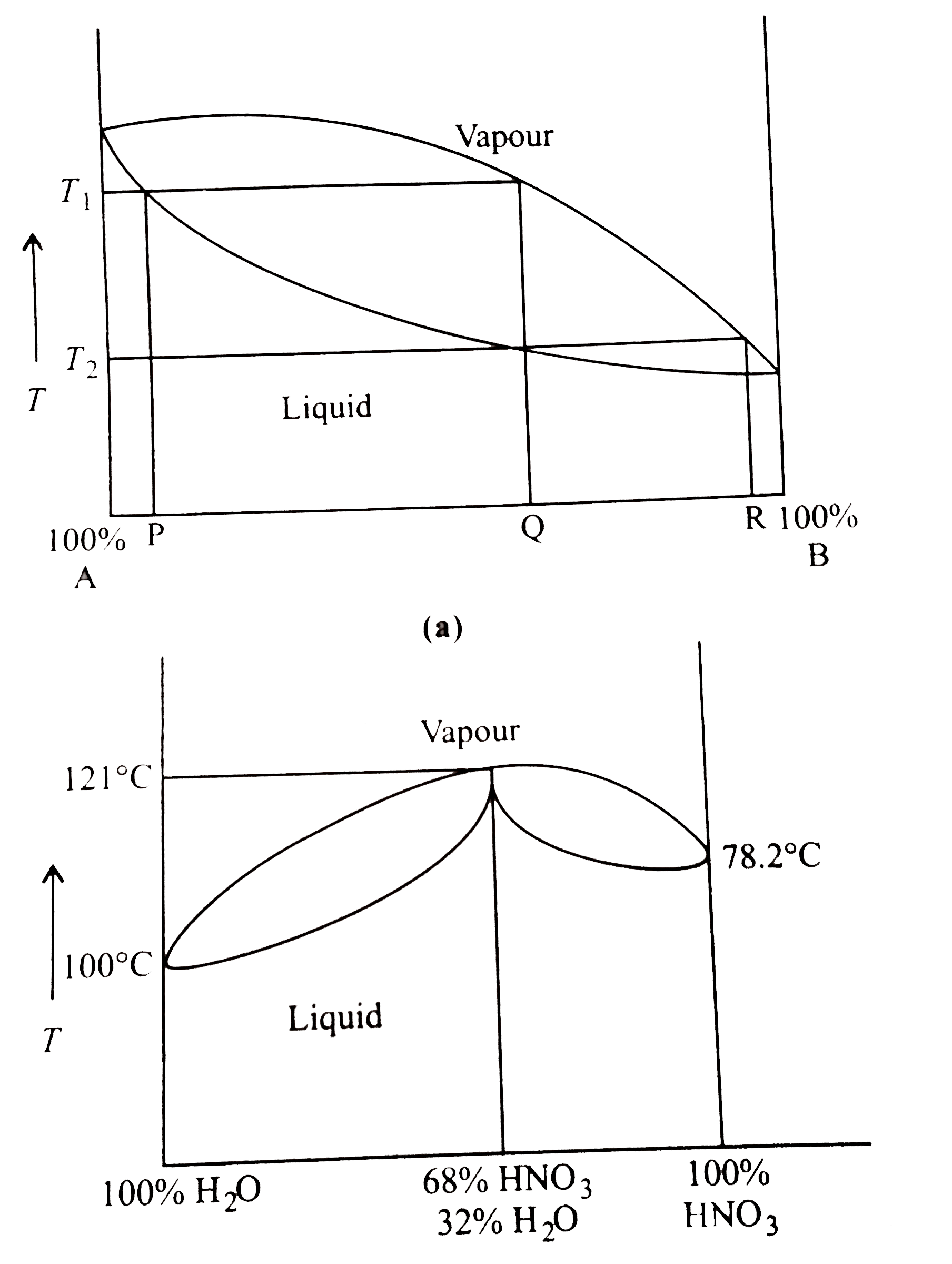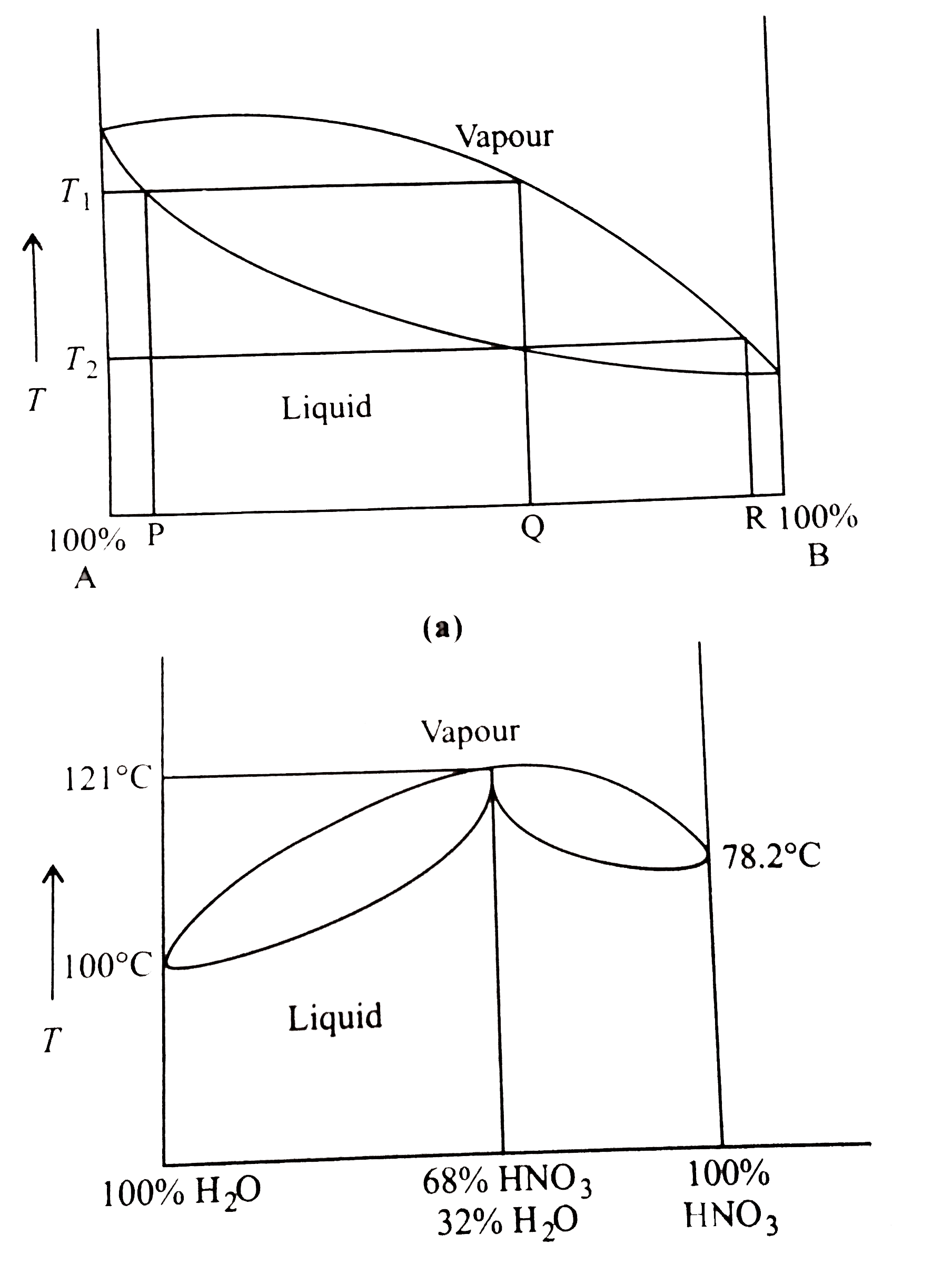Pure water boils at 373.15K and nitric acid boils at 359.15K. An azeotropic mixture of H2O and HNO3 boils at 393.15K. Distilling the azeotropic mixture will cause
A
Pure nitric acid to distil over first
B
Pure water to distil over first
C
One of them to distil over with a small amount of the other .
D
both of them to distil over in the same composition as that of the mixture being distilled .
Video Solution
|
Answer
Step by step video & image solution for Pure water boils at 373.15 K and nitric acid boils at 359.15 K. An azeotropic mixture of H_(2)O and HNO_(3) boils at 393.15 K. Distilling the azeotropic mixture will cause by Chemistry experts to help you in doubts & scoring excellent marks in Class 12 exams.
Updated on:21/07/2023
Related Playlists
- BOOK - XII BOARDS PREVIOUS YEARCHAPTER - QUESTION PAPER 2022 TERM 1 SET 1EXERCISE - SECTION -B24videos
QUESTION PAPER 2022 TERM 1 SET 1
- BOOK - XII BOARDS PREVIOUS YEARCHAPTER - QUESTION PAPER 2022 TERM 1 SET 1EXERCISE - SECTION-C6videos
QUESTION PAPER 2022 TERM 1 SET 1
- BOOK - XII BOARDS PREVIOUS YEARCHAPTER - POLITICAL SCIENCEEXERCISE - SECTION-E PART-B3videos
POLITICAL SCIENCE
- BOOK - XII BOARDS PREVIOUS YEARCHAPTER - QUESTION PAPER 2022 TERM 1 SET 2EXERCISE - SECTION -C6videos
QUESTION PAPER 2022 TERM 1 SET 2
Similar Practice Problems
- Question 1 - Select One
Pure water boils at 373 K and pure nitric acid boils at 359 K. The azeotropic mixture of water and nitric acid boils at T.K.
AT<359KBT>359KCT<373Kbut>359KDUnpredictable - Question 1 - Select One
Azeotropic mixture of water and C2H5OH boils at 351 K. By distilling the mixture it is possible to obtain
Apure C2H5OH onlyBPure water onlyCNeitherC2H5OH nor waterDBoth water and C2H5OH in pure state - Question 1 - Select One
Azeotropic mixture of water and HCl boils at 381.5 K. By distilling the mixture it is possible to obtain-
APure HCl onlyBPure water onlyCNeither HCl nor waterDBoth water and HCl in pure state - Question 1 - Select One
represents the distillation of mixture of liquid A and liquid B which gives both of pure liquid A and B . Represents the azeotropic mixture of HNO3 and H2O which distillation gives an azeotropic mixture and either of pure liquid. We cannot separate both the pure liquid, i.e., H2O and HNO3.
What is the result of distilling a mixture of 80%HNO3 and 20%H2O? APure H2O and azeotropic mixture can be separated.BPure H2O and pure HNO3 can be separated.CPure HNO3 and azeotropic mixture can be separated.DNone of these
APure H2O and azeotropic mixture can be separated.BPure H2O and pure HNO3 can be separated.CPure HNO3 and azeotropic mixture can be separated.DNone of these - Question 1 - Select One
represents the distillation of mixture of liquid A and liquid B which gives both of pure liquid A and B . Represents the azeotropic mixture of HNO3 and H2O which distillation gives an azeotropic mixture and either of pure liquid. We cannot separate both the pure liquid, i.e., H2O and HNO3.
What is the result of distilling a mixture of 50%HNO3 and 50%H(2)O ?
 APure water and azeotropic mixtue can be separated.BPure H2O and pure HNO3 can be separated.CPure HNO3 and azeotropic mixture can be separated.DNone of these
APure water and azeotropic mixtue can be separated.BPure H2O and pure HNO3 can be separated.CPure HNO3 and azeotropic mixture can be separated.DNone of these - Question 1 - Select One
represents the distillation of mixture of liquid A and liquid B which gives both of pure liquid A and B . Represents the azeotropic mixture of HNO3 and H2O which distillation gives an azeotropic mixture and either of pure liquid. We cannot separate both the pure liquid, i.e., H2O and HNO3.
a solution of 50% of B on distillation results into
 ASeparation of an azeotropic mixture and pure A.BSeparation of an azeotropic mixture and pure B.CSeparation of both pure A and pure B.DNone of these
ASeparation of an azeotropic mixture and pure A.BSeparation of an azeotropic mixture and pure B.CSeparation of both pure A and pure B.DNone of these - Question 1 - Select One or More
represents the distillation of mixture of liquid A and liquid B which gives both of pure liquid A and B . Represents the azeotropic mixture of HNO3 and H2O which distillation gives an azeotropic mixture and either of pure liquid. We cannot separate both the pure liquid, i.e., H2O and HNO3.
At temperature T1 and composition Q, which of the following is true?
 AVapour phase is richer in B while liquid phase is richer in A.BDistillation of composition Q gives only pure A.CDistillation of composition Q gives only pure A and pure B.DDistillation of composition Q gives higher percentage of B and A.
AVapour phase is richer in B while liquid phase is richer in A.BDistillation of composition Q gives only pure A.CDistillation of composition Q gives only pure A and pure B.DDistillation of composition Q gives higher percentage of B and A. - Question 1 - Select One
The azeotropic mixture of water and HCl boils at 108.5∘C. When this mixture is distilled, it is possible to obtain
APure HClBPure waterCNeither pure HCl nor pure waterDBoth pure HCl and pure water - Question 1 - Select One
represents the distillation of mixture of liquid A and liquid B which gives both of pure liquid A and B . Represents the azeotropic mixture of HNO3 and H2O which distillation gives an azeotropic mixture and either of pure liquid. We cannot separate both the pure liquid, i.e., H2O and HNO3.
Which of the following statements is/are correct?
i. HNO3 solution is not obeying the Raoult's law.
ii. More the difference in vapour pressure of pure compounds forming a mixture, easier to separate them through distillation.
iii. T2 is less than T1 because the liquid of composition Q is richer in more volatile component.
 A(ii) and (iii)B(ii)C(i) and (ii)D(i),(ii) and (iii)
A(ii) and (iii)B(ii)C(i) and (ii)D(i),(ii) and (iii)

